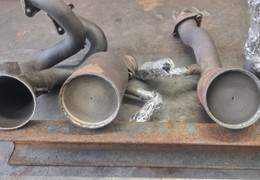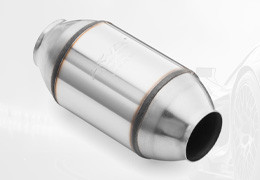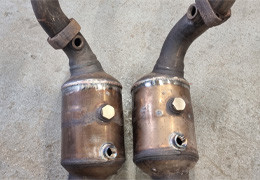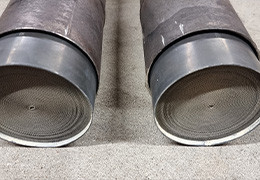-
Catalysts
addremove
- Universal catalysts
- Sports catalystsaddremove
- Reconditioned catalystsaddremove
- Alfa Romeoaddremove
- Aston Martinaddremove
- Audiaddremove
- Acuraaddremove
- BMWaddremove
- Chrysleraddremove
- Citroenaddremove
- Daciaaddremove
- Dodgeaddremove
- Fordaddremove
- Hondaaddremove
- Hyundaiaddremove
- Jaguaraddremove
- Jeepaddremove
- KIAaddremove
- Lamborghiniaddremove
- Huracanaddremove
- Land Roveraddremove
- Lexusaddremove
- MAN
- Mercedes-Benzaddremove
- Mazdaaddremove
- MINIaddremove
- Nissanaddremove
- Opeladdremove
- Peugeotaddremove
- Porscheaddremove
- Renaultaddremove
- Saabaddremove
- SEATaddremove
- Skodaaddremove
- Toyotaaddremove
- Volkswagenaddremove
- Volvoaddremove
- Original catalytic convertersaddremove
- Dedicated catalystsaddremove
- Used catalytic convertersaddremove
-
Catalysts
add remove Catalysts add remove
- Catalyst inserts addremove
- DPF Filters
- menu title addremove
-
Accessories
addremove
- Catalytic converter insert housings
- Exhaust cones
- Gadgets
- Exhaust dampers
- Probes and sensorsaddremove
- Lambda probesaddremove
- Temperature sensorsaddremove
- Exhaust gas pressure sensorsaddremove
- Crankshaft position sensorsaddremove
- Dampersaddremove
- Regeneration of catalysts
- Contact
- Blog
- Download
What are the symptoms of a clogged catalytic converter?
The catalytic converter is one of the more expensive components of a car's entire exhaust system. It is a fairly durable component, damage to which does not occur very often. Sometimes, however, during the operation of the vehicle, the catalytic converter becomes clogged. What are the symptoms of such a failure? How to deal with it?
- What is a catalytic converter?
- How does a catalytic converter work in a car?
- What are the symptoms of a clogged catalytic converter?
- What should be done when a catalytic converter is clogged?
What is a catalytic converter?
Catalytic converter is the common name for a catalytic converter. It is a component of the exhaust system in a car, van, truck or bus. It is located between the muffler and the exhaust manifold. The catalytic converter resembles in appearance a small-sized can, which is filled with channels. However, it performs a very important function in the entire exhaust system.
The task of the car catalytic converter is to reduce the harmfulness of exhaust gases escaping from the exhaust system into the atmosphere. Its correct operation is very important for both the environment and our health. Its presence in the system is regulated by law. Every car must meet certain "quality" standards for exhaust gases. A damaged or clogged catalytic converter can cause, among other things, a noticeable decrease in the power of the vehicle or just an increase in the harmfulness of exhaust fumes.
How does a catalytic converter in a car work?
Catalytic converters cars resemble small cans, inside of which there are numerous channels. It is these channels that contain precious metals such as platinum, rhodium or palladium inside. These metals come into contact with the exhaust gas coming from the engine. As a result of the chemical reaction of the metals with the exhaust gases, the toxic components contained in the exhaust gas are reduced. When the catalytic converter is clogged, it does not function properly, and the whole process is disrupted. When this happens, the operation of the engine can be disrupted. There is a decrease in the power of the vehicle, and more toxic substances enter the atmosphere and the strict EU emission standards are exceeded.
What are the symptoms of a clogged catalytic converter?
Clogged catalytic converter is certainly nothing good. However, how can you tell if the catalytic converter in your car is clogged? The symptoms will be slightly different for diesel-powered cars and those running on gasoline. A clogged catalytic converter will give more pronounced symptoms in diesel than in gasoline cars.
The most common symptoms of a clogged catalytic converter will be:
- unsteady engine idling;
- noise coming from the chassis;
- car vibration;
- loss of car dynamics;
- increased combustion;
- firing of the "check engine" light.
Symptoms of a clogged catalytic converter, especially those associated with a noticeable decrease in the dynamics of the car, problems with achieving full power of the car and increased combustion, are caused by the fact that the exhaust gas that goes into the catalytic converter - gets trapped in it. All this causes an increase in back pressure, which blocks the proper operation of the engine.
The above symptoms will be noticeable especially in the case of diesel engines. Gasoline cars may not exhibit noticeable symptoms.
Clogged catalytic converter - what are the causes?
Clogged catalytic converter is a "defect" that usually occurs in older cars. In new models, the phenomenon of clogged catalytic converter should not occur. Catalytic converters are very durable devices. So if it is used properly, it should last up to 200,000 kilometers without malfunction. However, this applies only to more expensive, but also more durable metal catalytic converters. The case is slightly different for ceramic catalytic converters.
The older types of ceramic catalytic converters are mainly prone to faults. They are less resistant to mechanical wear. In ceramic catalytic converters, the damage or, more precisely, the core of the catalyst is worn out. This occurs most often with improperly adjusted gas installation in LPG-powered cars. In this case, the exhaust gas reaches higher temperatures, so that our catalytic converter may be damaged in the long run. So it is worth checking the condition of the catalytic converter present in our gas car.
The catalytic converter can also be damaged when trying to start the car while towing or pushing. When this happens, the fuel can get inside the catalytic converter, where it will be burned. The same situation - i.e. fuel burning in the catalytic converter - can occur if the ignition system fails. The burning of fuel in the catalytic converter causes a sudden increase in temperature, which leads to its damage.
What should we do if it turns out that the catalytic converter in our car is clogged?
The catalytic converter is a component of the exhaust system, which unfortunately is not one of the cheapest. However, this does not mean that we can ignore with impunity the symptoms of an existing defect. With a clogged catalytic converter, you should not drive. Why? First of all, a clogged catalytic converter will limit your car's capabilities. You may then find that when you need the full power of your engine (for example, when overtaking), the car will not meet your requirements, which in turn can lead to an accident.
When you notice any of the above symptoms in your car, indicating a clogged catalytic converter - go to a mechanic to confirm your suspicions and remove the defect. As with an illness in a person, do not underestimate the symptoms, because ignoring the "disease" or, in the case of a car, the malfunction, can cause even more damage and much higher expenses.
Removing the catalytic converter malfunction should be done at a mechanic or service center. With the right skills, you can also replace the catalytic converter yourself. A damaged catalytic converter should be replaced with a remanufactured or new one. A fairly common practice is to remove the damaged catalytic converter and replace it with a used model or its imitation - an empty catalytic converter housing. However, this practice is not allowed! A used catalytic converter is a product for disposal.
Do you need a catalytic converter for your car? Use our contact form, and we will help you select the right model.
.
Posted in:
News











Latest comments